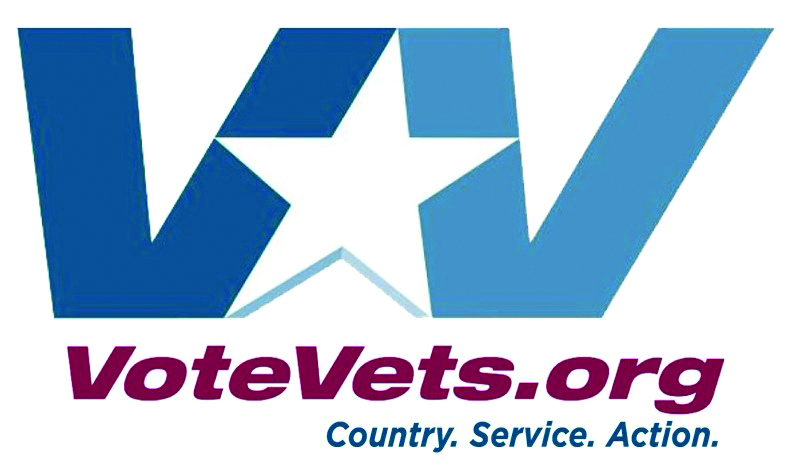Cutting Medicaid Would Hurt Veterans
05.22.2017
Efforts in Congress to cut Medicaid jeopardize a critical source of health coverage for veterans. Approximately 1.75 million veterans—nearly 1 in 10—have Medicaid as a source of coverage.1 This coverage ensures that veterans get the primary and specialty health care they need when they need it.

About 340,000 veterans nationally receive coverage through the Affordable Care Act’s (ACA) Medicaid expansion.2 Most of these veterans would likely lose that coverage if Congress passes the Republican proposal to slash funding for the Medicaid expansion.
Republicans in the House of Representatives have also proposed to radically change the structure of the Medicaid program by capping and cutting funding—a blow to the Medicaid program that would put the health care of 1.75 million veterans at risk.
Not all veterans can get health care through the VA
Not all veterans qualify to receive health insurance through the Department of Veterans Affairs (VA). Eligibility relates to a variety of factors, including minimum service requirements as well as disability and discharge status.3 According to the Veterans Administration, in 2014 only 40 percent of all veterans were enrolled in the VA health care system.4 Furthermore, veterans’ family members rarely qualify for VA assistance.5
Approximately 1.75 million veterans rely on Medicaid. Many of these veterans have extensive health care needs. High-cost enrollees, such as veterans who require intensive care for conditions like traumatic brain injuries and musculoskeletal disorders, are at particular risk if the program is cut. Efforts to cap and cut Medicaid risk the health and security of veterans most in need.
Additionally, not all veterans enrolled in the VA can easily use VA services. One-third of veterans enrolled in the VA did not use a VA service in 2014.6 Many enrolled veterans do not live near a VA provider. Transportation issues can make it impractical or impossible for veterans to use the VA as a source of care. This is particularly true for the millions of veterans who live in rural areas.7
Nearly 1 in 10 veterans relies on Medicaid
In 2015, roughly 1.75 million veterans (ages 18 and older)—nearly 1 in 10—had Medicaid coverage (see Table 1). In many cases, Medicaid supplemented VA or other coverage like Medicare for veterans who were older than 65. About half of Medicaid-enrolled veterans are aged 18-64 and ineligible for Medicare. Forty percent of these 913,000 working-age veterans (18-64) with Medicaid had no other source of health coverage. Without Medicaid coverage, they would be uninsured. Medicaid is their only way to reliably get access to needed care.
Medicaid is also an important source of coverage for veterans’ family members, who rarely qualify for veterans benefits to help cover health care costs. In 2015, more than 660,000 veterans’ spouses were enrolled in Medicaid.
The ACA and the Medicaid expansion have improved veterans’ access to health coverage
Since the implementation of the ACA, the number of veterans without health insurance has declined.8 The ACA’s Medicaid expansion, which extended Medicaid coverage to more working-age veterans, has helped to increase veterans’ access to health coverage.
The Medicaid expansion extended coverage to millions, including hundreds of thousands of veterans. Congressional efforts to end the expansion, whether through a freeze in enrollment or a phase-out of federal funding, pull the rug out from under veterans who gained coverage.
In 2015, more than 913,000 veterans between the ages of 18 and 64 were enrolled in Medicaid, and about 340,000 veterans received Medicaid because of the Affordable Care Act’s Medicaid expansion. That represents a significant increase in the Medicaid enrollment of working-age veteran from 2013, the year before the ACA went into effect (see Table 2). While the number of veterans covered by Medicaid increased across most states when the ACA was implemented, it was significantly greater among states that expanded Medicaid.9
Changing the structure of the Medicaid program or ending the Medicaid expansion would hurt veterans and their families
Veterans and their family members depend on Medicaid. Sometimes it supplements VA or other coverage; for many, it is their only source of coverage.
Veterans are at a higher risk than most for unique and sometimes serious or complicated health care issues as a result of their service. These health conditions might include musculoskeletal conditions, traumatic brain injuries, and post-traumatic stress disorder.
Congressional actions such as capping and cutting Medicaid or ending or phasing out the Medicaid expansion would make it harder for veterans to get the health care they need. This is a disservice to those who have served our country.
Congress should be taking steps to make it easier, not harder, for veterans to access the health care they need when they need it. Voting to end the Medicaid expansion or to cap or cut Medicaid is a vote against veterans and their families.
Methodology
Data Source
To analyze the number of veterans and their spouses who have Medicaid coverage, Families USA used the Public Use Microdata Sample (PUMS) database. This database is derived from the American Community Survey, an ongoing public survey conducted by the U.S. Census Bureau. It is designed to give communities the current information they need to plan and invest. Both national and state data are available.
For 50 states and the District of Columbia, we gathered the following information on residents:
- veteran status;
- veteran’s spouse status;
- age; and
- health insurance status, namely Medicaid coverage and coverage secondary to Medicaid.
Families USA analyzed data from two one-year data samples: 2013 and 2015. We did this to capture the year prior to full ACA implementation, including the Medicaid expansion, to compare it to 2015, two years after full ACA implementation and the most recent data available.
More information on the American Community Survey is available at https://www.census.gov/acs/www/about_ the_survey/american_community_survey/.
How We Sorted and Interpreted the Data
To identify the populations that were veterans or the spouses of veterans in 2013 and 2015, Families USA sorted the sample to capture responses of individuals ages 18-64 and 65 and over who reported being veterans or the spouse of a veteran. We then sorted the sample of veterans and their spouses by age category to capture those insured through Medicaid. We likewise sorted the veterans sample to capture the responses of veterans who reported having a secondary source of coverage to Medicaid.
Comparing 2013 to 2015 and Medicaid Expansion Adults
Families USA compared data from 2013 to 2015 for people who reported being a veteran between ages 18 and 64 and covered by Medicaid. We then sorted and compared Medicaid expansion and non-expansion states. States were classified as Medicaid expansion states in 2015 for the purposes of this analysis if they had implemented expanded Medicaid by January 1, 2015. For this reason, Louisiana, Montana, and Alaska were not considered to be Medicaid expansion states despite having subsequently expanded.
To determine the number of veterans who benefited from the Medicaid expansion in 2015, we used 2015 data from the Centers for Medicare and Medicaid Services (CMS) and the Kaiser Family Foundation to determine the number of adults ages 18-64 enrolled in Medicaid. Using CMS MBES enrollment data on the number of new adult expansion enrollees (labeled Group VIII enrollees), we calculated the ratio of Medicaid adults who are deemed to be a member of the Medicaid expansion population (Group VIII) to the total population of Medicaid enrolled adults (18-64).
We applied this ratio to the full population of Medicaid enrolled veterans ages 18-64 in 2015 to determine the number of veterans who benefit from Medicaid expansion. As part of this analysis we used Veterans Administration and Census Bureau data to confirm that veterans are distributed across expansion and non-expansion states similarly to the general adult population.
Data Limitations
These estimates are based on the ACS PUMS using the standard weights that are provided. While the tabulated numbers represent an accurate central estimate (unbiased), any one estimate could represent an over- or under-estimate of the true population. Smaller states have fewer respondents and will have a larger margin of error as a percentage of the estimate. The exact margin of error for the estimates can be calculated using formulas provided by the Census Bureau. More information is available at https://www2.census.gov/programs-surveys/ acs/tech_docs/pums/accuracy/2015AccuracyPUMS.pdf.
The estimates contained in the report are conservative, and likely do not represent the entire universe of veterans with Medicaid. Census Bureau surveys have historically undercounted the number of Medicaid respondents. To learn more about Census Bureau data collection and Medicaid. More information is available at http:// www.shadac.org/sites/default/files/publications/ ACSUndercount_WorkingPaper_0.pdf.
Endnotes
1Families USA analysis of 2015 American Community Survey data from the U.S. Census Bureau. See the report Methodology for more detail.
2Families USA analysis of 2015 American Community Survey data from the U.S. Census Bureau and 2015 Medicaid enrollment data from the Centers for Medicare and Medicaid Services and the Kaiser Family Foundation. See report methodology for more detail.
3Sidath Viranga Panangala, Health Care for Veterans: Answers to Frequently Asked Questions (Washington, D.C.: Congressional Research Service, 2016), available at https://fas.org/sgp/crs/misc/R42747.pdf.
4Erin Bagalman, The Number of Veterans That Use VA Health Care Services: A Fact Sheet (Washington, D.C.: The Congressional Research Service, 2014) available at https://fas.org/sgp/crs/misc/R43579.pdf.
5Veterans family members are not eligible for enrollment in VA health services, but some qualify for VA reimbursement for some medical expenses. (Sidath Viranga Panangala, op cit.)
6Sidath Viranga Panangala, op. cit.
75.3 million veterans live in rural America. Many of them rely on Medicaid and the Medicaid expansion for their health coverage. See Michael Topchik, Rural Relevance: Assessing the State of Rural Health Care in America (Chicago, IL: The Chartis Center for Rural Health, 2017); and Jennifer Haley, et al., Veterans and their Family Members Gain Coverage Under the ACA, But Opportunities for More Progress Remain, (Washington, D.C.: The Urban Institute, 2016), available at http://www.urban.org/sites/ default/files/publication/84441/2000947-Veterans-and-Their-Family-Members-Gain-Coverage-under-the-ACA-but-Opportunities-for-More-Progress-Remain.pdf.
8Jenifer Haley et al, Veterans Saw Broad Coverage Gains Between 2013 and 2015,”(Washington, D.C.: The Urban Institute, 2017) available at http://www.urban.org/research/publication/veterans-saw-broad-coverage-gains-between-2013-and-2015/view/full_report.
9States that expanded Medicaid saw a 34 percent increase, while non expansion states saw a 3 percent increase. See methodology for details.





